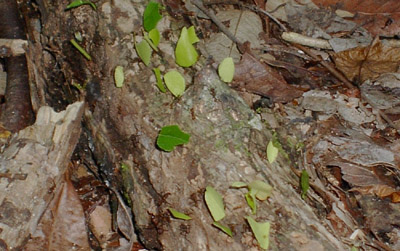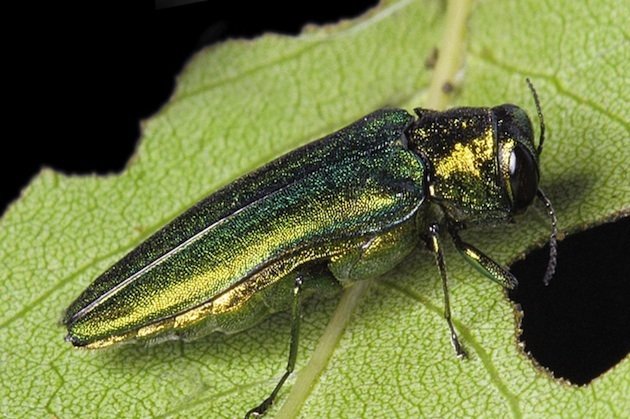We’re just about at that point in the winter season where I start daydreaming about glorious, sun-drenched days of summers past. The source of some of my favorite tropical, or more accurately, Neotropical memories is the trip Sara and I took to Belize in July 2003. Though we embarked on a week’s worth of thrilling expeditions and adventures, even the quiet moments offered ample fodder for winter reminiscence.
One afternoon, after doing something preposterous like canoeing through a pitch-black cave or something, we were back at our grass-thatched hut trying to get some rest. Actually, Sara was the only one interested in rest. I, a brand new birder dropped down in the middle of a Central American rain forest thick with new species for the first time in my life, couldn’t sit still for a moment, despite the siren song of the hammocks on our veranda. So, I dragged my wonderful, patient wife out for a brief stroll through the lodge’s property. As we crested a large hill, exotic trees to either side and the calls of unknown birds echoing through the jungle, we looked down and spotted a grand little procession:

Leaf cutter ants on the move
Though I didn’t anticipate encountering a parade of rendered foliage crossing our path, I knew exactly what were looking at. At last, our first encounter with Leaf Cutter Ants! Now, all ants are awesome in their industry and collective ingenuity, but leaf cutters bring these estimable traits to levels unmatched by any species but ours. These ants are the only other organisms in the world that cultivate their own food from living matter. Said matter, a composition of leaves, grass, petals, and other plant parts that are incised into manageable pieces and transported back to the nest for further processing and mastication, supports farmed fungal cultures providing nutrition for the entire colony.
A leaf cutter ant parade presents an amazing sight, as the first thing a viewer sees is not insects, but vegetation, specifically tiny bits of vegetation flowing gracefully over logs, rocks, and earth. This stream of leaves typically lacks a visible beginning or end; these ants are also known for their prodigious populations. Only when one focuses on the emerald specks do the actual ants appear. The particular species I stumbled upon was most likely Atta cephalotea, known as weewi aants in Belize kriol. Other Atta and Acromyrmex species, 38 in all according to the utterly fascinating Lurker’s Guide to Leafcutter Ants, range from Texas and Arizona through Mexico, Central and South America, all the way down to Argentina.
While we admired these agricultural insects, we spotted a scarlet bird skulking in the underbrush. More intensive examination uncovered what we believe was a Red-throated Ant-Tanager, a lovely bird to be sure. Imagine that, an ant-tanager close to ants!




 New writers welcome – please contact us for details.
New writers welcome – please contact us for details.

















Leave a Comment